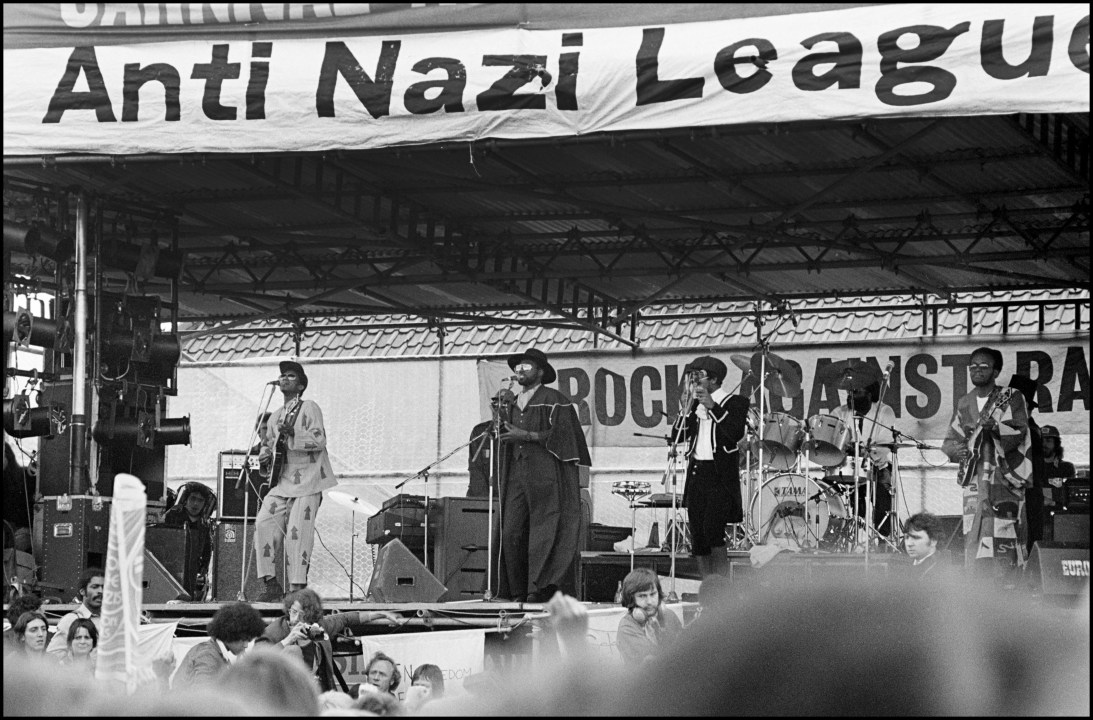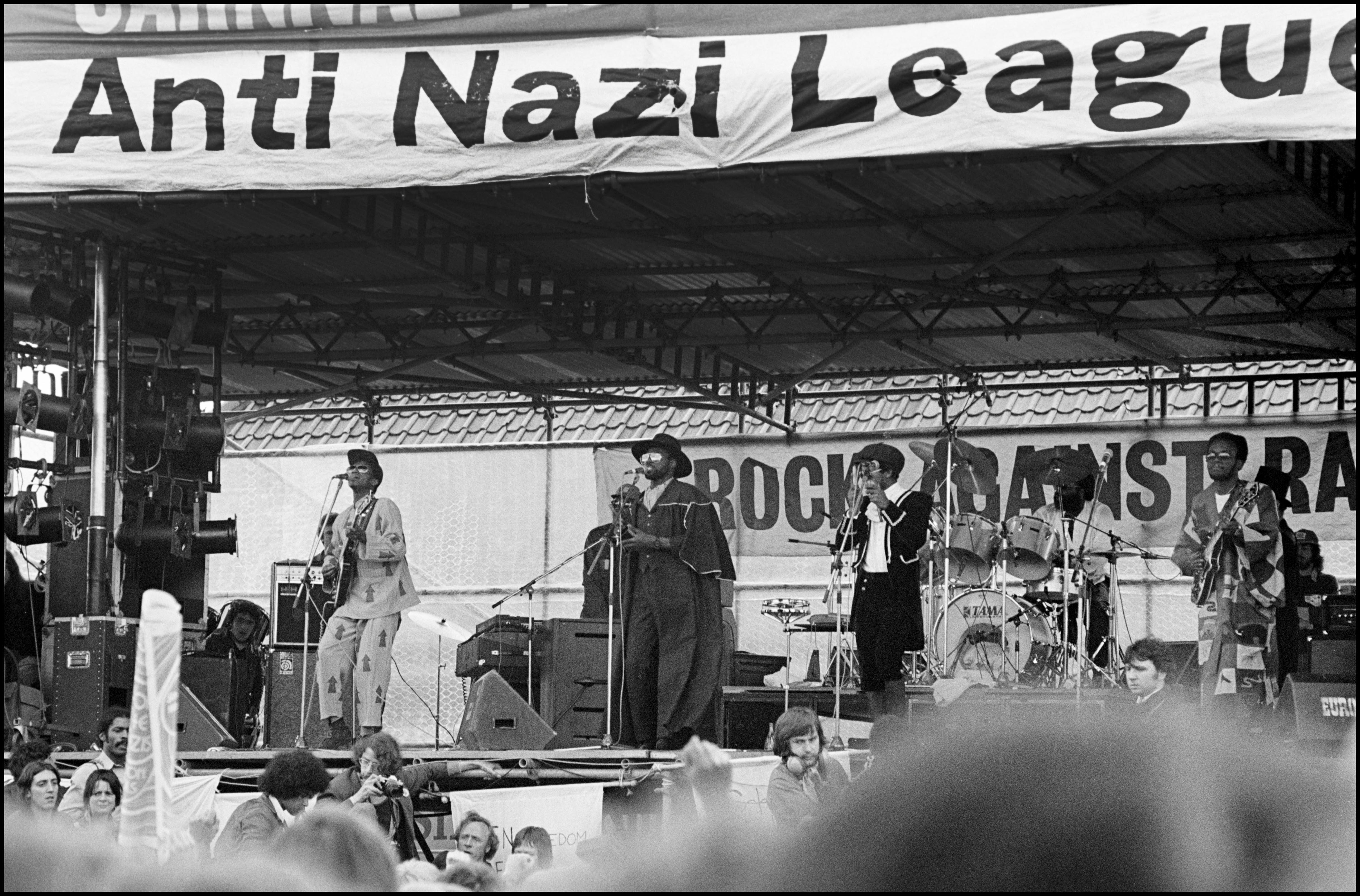On 13 August 1977, a demonstration by the National Front was routed in the streets of Lewisham by thousands of anti-fascist activists. The latter’s elation palled, however, when they saw the evening news frame the event as a battle between rival extremists. Among the critical voices were Labour’s deputy leader Michael Foot and the Daily Mirror, which branded the anti-fascists ‘as bad as the National Front’.
The NF’s opponents learned a valuable lesson at remarkable speed. Just weeks later, they launched the Anti-Nazi League at the House of Commons, with Neil Kinnock and Peter Hain on the steering committee and a medley of celebrity supporters that included Iris Murdoch, Brian Clough, Melvyn Bragg, Dave Allen, Warren Mitchell and Prunella Scales. Anyone familiar with the period will know about the role of the Clash in anti-fascism’s popular front but perhaps not that of Sybil from Fawlty Towers.
The history of political activism, especially on the left, is largely a chronicle of arguments. The movements which succeed are those that overcome factional disagreements and rally as many people as possible around a common cause. In that sense, the story of the ANL and its forerunner Rock Against Racism, is exemplary, and it all started with Eric Clapton.
In August 1976, when the NF was Britain’s fourth largest political party, the revered guitarist interrupted a concert in Birmingham with a startlingly racist rant of which the most printable portion was a full-throated ode to Enoch Powell. The socialist photographer Red Saunders, previously a Clapton fan, was so enraged that he wrote to the weekly music papers announcing the formation of a new group, Rock Against Racism, with the slogan: ‘Black and white unite and fight.’ It quickly blossomed into Britain’s largest mass movement since CND, with an armada of niche groups, ranging from Schoolkids Against the Nazis to Spurs Against the Nazis, sailing behind the flagships of RAR and the ANL. Billy Bragg has described RAR’s carnival in Victoria Park in 1978 as ‘the moment when my generation took sides’.
Readers who are primarily interested in RAR should turn to Daniel Rachel’s prize-winning oral history, Walls Come Tumbling Down. David Renton, a barrister, historian and former anti-fascist organiser, is much sketchier when it comes to music. He repeats, for example, the old canard that New Order took their name from the Third Reich and struggles to unpick the tangle of motives behind punk bands’ gauche flirtation with Nazi iconography. Absent from new interviews, the musicians never swim into focus.
Still, their story has been told many times and Renton’s brisk yet rigorous book excels on the political context. He elucidates the toxic internal politics of the NF under John Tyndall, an accountant who modelled himself on Oswald Mosley, and the role of those MPs and journalists who echoed the NF’s white supremacist rhetoric in the name of thwarting it. Turning to the anti-fascist camp, Renton doesn’t skimp on the numerous disagreements that churned beneath the surface image of multi-racial solidarity: between the alliance builders and the direct-action advocates; between the white anti-Nazis and the black activists who wanted to challenge mainstream forms of racism as well; between the politicised punks and those who dismissed RAR as a didactic front for the Socialist Workers Party, of which Renton is a former member. ‘I don’t need to be told by a commie organisation to love blacks,’ complained the fanzine editor Mark Perry.
In reality, the movement relied less on diktats than on countless individual acts of courage. The journalist Sheryl Garratt recalls berating a group of skinheads for the absurdity of chanting far right slogans while dancing to black music. Chastened, they stopped. Garratt concluded that Tyndall’s small core of fanatical neo-Nazis was orbited by many confused young men with ‘a vague unease that things weren’t right and life wasn’t fair’. It was this friable outer layer of support that rapidly crumbled away, leaving the NF humiliated in the 1979 general election. Margaret Thatcher’s harder line on immigration cannibalised the NF vote, but Renton argues that it only did so because the party was already demoralised and discredited by three years of grassroots opposition. The battle was won in Victoria Park as well as Westminster.
Although some opponents of a second referendum on Brexit summon the spectre of civil unrest, Britain is a long way from the routine violence of the 1970s, when Brick Lane and Chapel Market were regular battlegrounds and gigs often turned into brawls. The far right is resurgent online but not yet in the streets or at the ballot box.
Similarly, the speed and scale of RAR’s success, made possible by the explosive new energy and pulling power of punk and homegrown reggae, is unrepeatable. Yet there are broader lessons here for anyone seeking to build an effective mass movement without being derailed by purity politics or egos. The comedian Mark Steel recalls his elation at one of RAR’s carnivals: ‘Instead of feeling angry I felt jubilant, because now I was doing something.’ Never Again explains exactly how something was done.







Comments